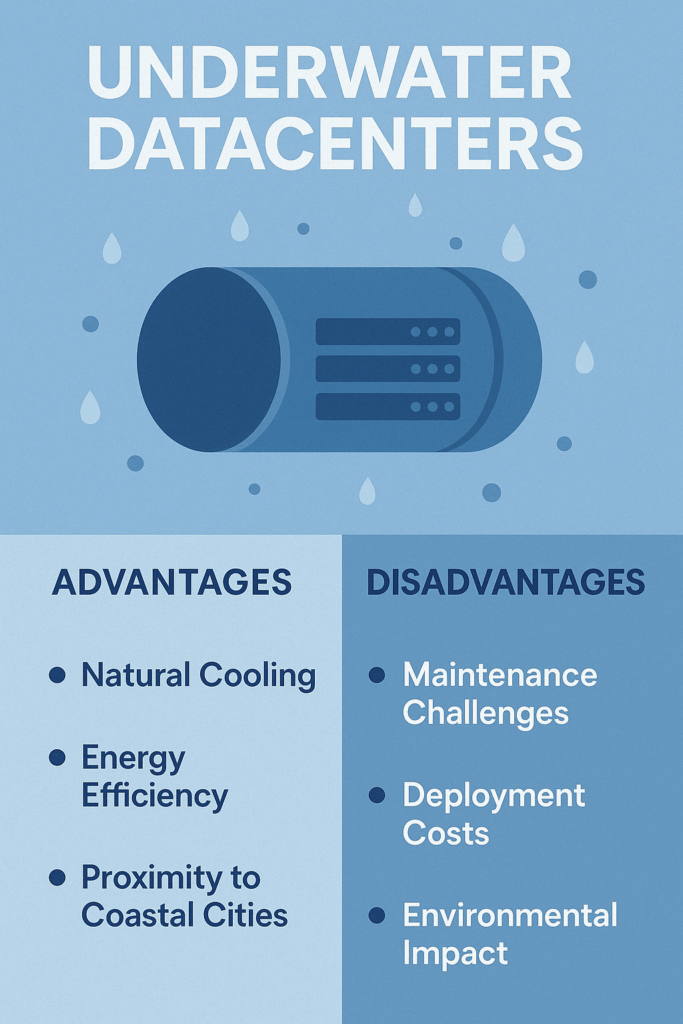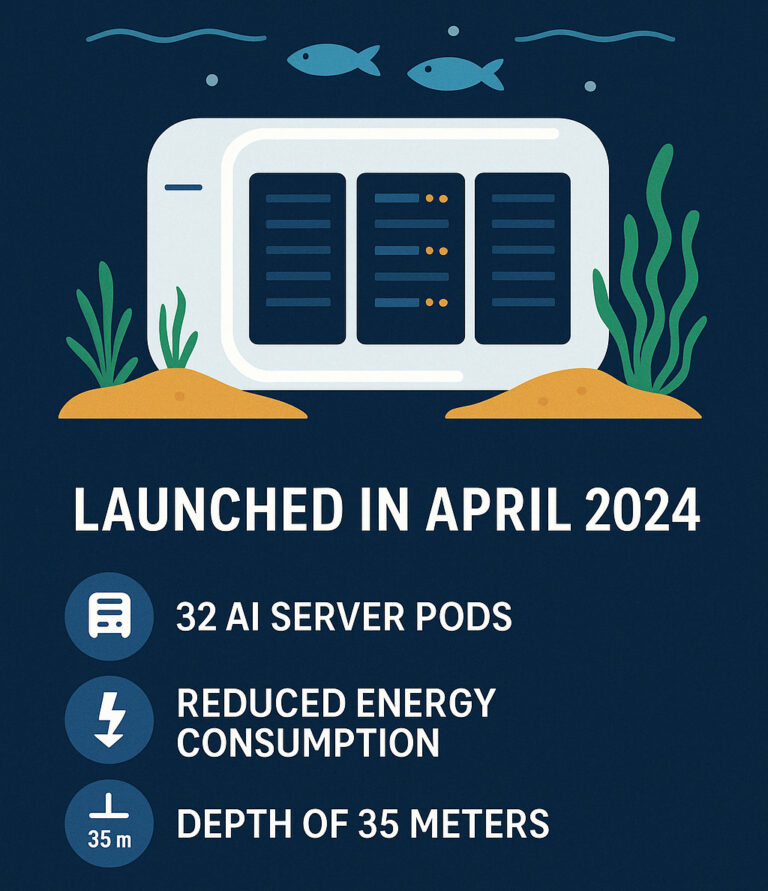Diving into the Future: China’s First Underwater AI Data Center and the Rise of Subsea Computing
The world is racing to meet the insatiable demand for computing power while striving for energy efficiency. A new frontier in data center innovation has surfaced. Beneath the ocean’s waves. On March 13, 2025, China unveiled the world’s first operational underwater AI data center, marking a historic milestone in data infrastructure. It redefines how we think about sustainability, scalability, and cooling technology.
What is an Underwater Data Center?
An underwater data center is a sealed, pressure-resistant module containing the server infrastructure. It is submerged in bodies of water, typically oceans, seas, or lakes. Using the natural cooling capacity of water, these submerged centers significantly reduce the need for traditional air-based HVAC systems.
This concept gained global attention when Microsoft launched Project Natick, a subsea data center experiment off the coast of Scotland in 2018. However, China has now taken the leap from experimentation to implementation, with a fully functional, AI-optimized underwater facility.

China’s Underwater AI Data Center: A World First
According to Vocal Media, the Shenzhen-based facility was constructed off the coast of Sanya, Hainan province. Designed to support high-performance computing (HPC) and artificial intelligence workloads, the modular pod is part of a broader initiative to decentralize data infrastructure and integrate sustainability into its design.
Key Features:
Modular Construction: Individual pods can be manufactured on land and deployed at sea, enabling scalable expansion.
AI Integration: Designed specifically for AI processing, the center provides enhanced GPU support and data throughput.
Natural Cooling: Leverages ocean water for passive thermal dissipation.
Green Power Integration: Positioned near renewable offshore energy sources.
The first module, equivalent to a land-based data center of over 60 server racks, was submerged at a depth where water temperature remains stable year-round, maximizing thermal efficiency.

Advantages of Underwater Data Centers
Natural Cooling
The most significant benefit is the reduction in cooling energy costs, often one of the largest operational expenses in traditional data centers. Seawater provides a free, constant cooling source.
Energy Efficiency
By minimizing HVAC usage and integrating with renewable offshore power sources like wind or tidal energy, underwater centers reduce their carbon footprint.
Space Optimization
Coastal cities, often limited in land availability, can benefit from data center expansion without occupying valuable real estate.
Physical Security
Once deployed, the center is highly secure from physical tampering or vandalism due to its remote underwater location and sealed structure.
Challenges and Considerations
Maintenance Complexity
Unlike traditional data centers where technicians can walk in and troubleshoot, underwater facilities require complete retrieval for hardware upgrades or repairs, increasing downtime and cost.
High Deployment Costs
Initial investment in underwater pods, waterproof enclosures, undersea cabling, and installation logistics can be significantly higher than land-based alternatives.
Environmental Impact
Though designed with sustainability in mind, concerns remain about potential impacts on marine ecosystems, including heat dispersion and the risk of pollution from leaks or failures.
AI Workloads and the Need for Innovation
The exponential growth of AI applications—particularly large language models, video processing, and edge inference—demands high-density compute environments. These workloads generate substantial heat, making efficient thermal management a core issue.
China’s underwater AI data center is tailored for these challenges. With dedicated GPU clusters, low-latency fiber connectivity, and proximity to major urban coastal zones, the facility aligns with the nation’s broader AI and cloud infrastructure strategy.
The Future of Subsea Data Centers
China’s bold move signals a new era for data infrastructure, especially in the context of edge computing, sustainability mandates, and urban expansion constraints. As governments and enterprises seek to balance performance, cost, and environmental impact, underwater data centers may become a strategic piece of the puzzle.
Companies like AKCP, specializing in environmental monitoring solutions, could play a pivotal role in supporting these novel deployments. Monitoring subsea thermal conditions, vibration, humidity within enclosures, and power metrics will be essential for operational reliability.
Conclusion
China’s launch of the world’s first underwater AI data center is more than a technological achievement—it’s a vision of the future. One where computing is not only faster and more powerful but also more environmentally conscious and spatially innovative.
As the industry watches closely, one question looms: will other nations follow China’s lead and take the data center plunge?
